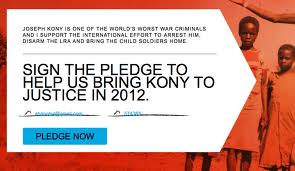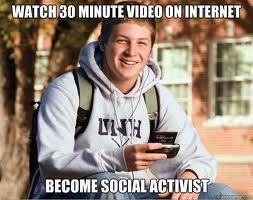 I know, I know . . . I keep coming back to the issue of loyalty, but I think this is the biggest issue for this generation of non-profit organizations. In fact, I think it will determine who is going out-of-business or being forced into merger/acquisition talks in the upcoming years. It is just that transformative of an issue!
I know, I know . . . I keep coming back to the issue of loyalty, but I think this is the biggest issue for this generation of non-profit organizations. In fact, I think it will determine who is going out-of-business or being forced into merger/acquisition talks in the upcoming years. It is just that transformative of an issue!
What set me off and down this path again, was an email I received in my inbox yesterday from Gail Perry titled: “Don’t Be a Fundraising Dinosaur: 5 Big Ideas to Adopt Right Now“. It was such a tantalizing and catchy title that I couldn’t resist clicking on it. In about 5 seconds, I felt just like Alice tumbling down the rabbit hole all over again. LOL
Gail’s second “big idea” was “Donor retention is more important than cash totals“. I read that header and thought to myself “DUH,” and then I read the following sentence:
“If you can only measure one thing in your fundraising program, then measure donor retention.”
Think about THIS for a moment . . . “only measure one thing” . . . isn’t she essentially saying donor retention is the MOST IMPORTANT thing to gauge how well your resource development program is succeeding or failing?
I think that is exactly what she is saying . . . and that is what got my attention.
It also begs the question: “What should non-profit and fundraising professionals focus on doing to encourage donor loyalty?”
Gail suggested the following few things:
- ask your donors for video testimonials, and
- ask your donors to do more than just write checks . . . get them involved through advocacy and volunteerism.
Both are great suggestions and you couldn’t go wrong if you decided to take those roads.
However, the words of Mahatma Gandhi keep ringing through my ears this morning as I read Gail’s blog post:
“Be the change you want to see in the world.”
 Essentially, this translates into what I titled this blog post. If you want donors to be loyal to your mission, then you need to be loyal to your donors. What does THAT mean? Well, I turned to Adrian Sargaent for help in answering this question. In 2003, Professor Sargaent wrote an article in The NonProfit Times titled “Keeping Donors Loyal: How to Minimize Attrition on the Fundraising Database“.
Essentially, this translates into what I titled this blog post. If you want donors to be loyal to your mission, then you need to be loyal to your donors. What does THAT mean? Well, I turned to Adrian Sargaent for help in answering this question. In 2003, Professor Sargaent wrote an article in The NonProfit Times titled “Keeping Donors Loyal: How to Minimize Attrition on the Fundraising Database“.
In that article, Sargaent makes two great points:
- one-third of lapsed donors surveyed said they stopped giving because they found other charities that were “more deserving,” and
- engaging donors in HOW they are communicated with and WHEN they are communicated with and WHAT they want to hear is an effective and important strategy in the fight for a donor’s loyalty.
For those of you who read this and think: “We can’t do that. We’re too small. We don’t have the resources to pull-off that kind of donor communication strategy.” Sargaent cuts you off at the knees and suggests that even today’s smallest non-profit organizations can implement a strategy like this because donor database technology is very affordable and powerful.
I, too, was once an executive director of a very small non-profit organization. Back then, I am sure that I would’ve read that database-related comment and immediately come up with more reasons as to why he is wrong: staffing, budget, time, etc, etc, etc.
So, here is my challenge to you today. Rather than focus on the WHY NOT, I challenge you to focus on the HOW. I challenge you to engage board members in this discussion. I challenge you to engage donors in this discussion. While I won’t predict that it will get you to a specific place when it comes to donor-centered fundraising, I will dare say that it will get you closer to answering the question: “How can your organization demonstrate loyalty to donors so that they’ll be better positioned to reciprocate the gesture?”
 There must be a million ways for your non-profit organization to show its loyalty to donors. Please scroll down and share a few of the things you’re implementing from a donor loyalty perspective. We can and should be learning from each other. Please share just one idea today!
There must be a million ways for your non-profit organization to show its loyalty to donors. Please scroll down and share a few of the things you’re implementing from a donor loyalty perspective. We can and should be learning from each other. Please share just one idea today!
Oh yeah, I almost forgot. Gail Perry shared a link to a great resource . . . a sample dashboard that resource development teams could use to measure and capture important donor loyalty metrics. Click here and you will see the two slides by Peter Drury that Gail shared in her blog post. A good friend of mine at Boys & Girls Clubs of America used to say: “Inspect what you expect”. (I suspect he borrowed this quote from someone more famous. LOL) However, the point is still valid . . . you need to have a monitoring and accountability strategy in place as you start heading down these roads that aren’t traveled often enough by non-profit organizations.
Good luck, and as I always: “Here’s to your health!”
Erik Anderson
Founder & President, The Healthy Non-Profit LLC
www.thehealthynonprofit.com
erik@thehealthynonprofit.com
http://twitter.com/#!/eanderson847
http://www.facebook.com/eanderson847
http://www.linkedin.com/in/erikanderson847
























